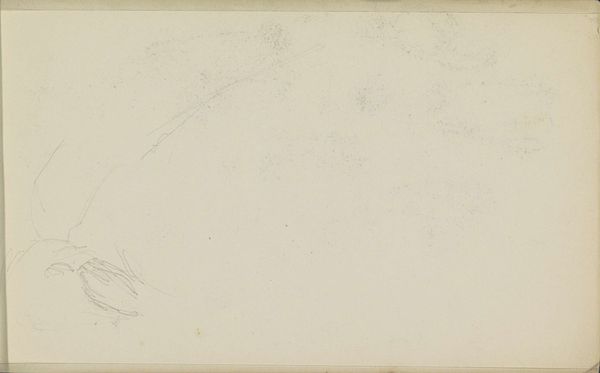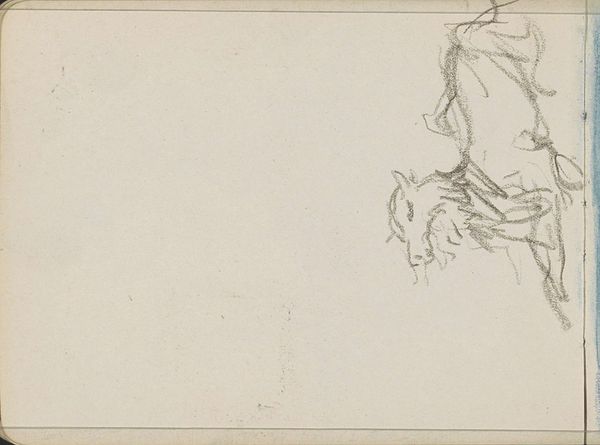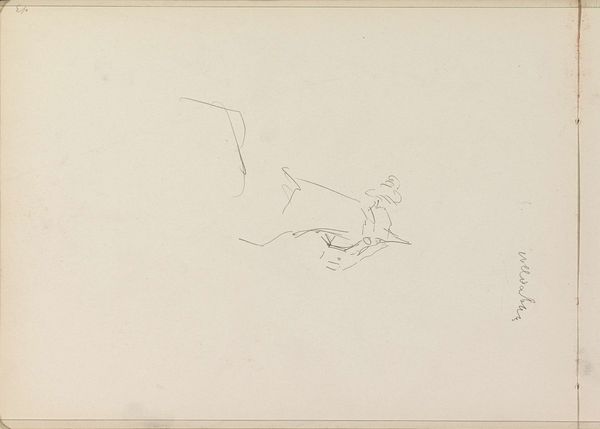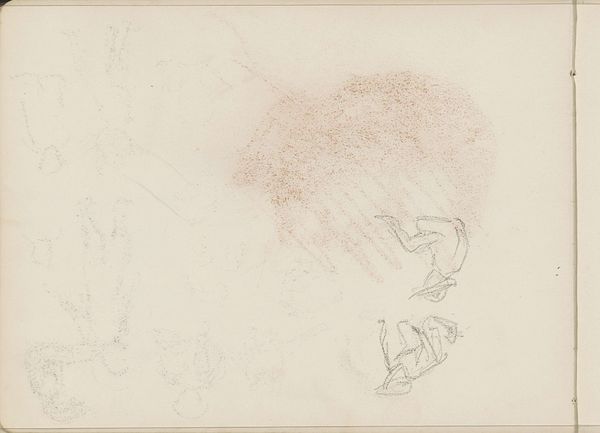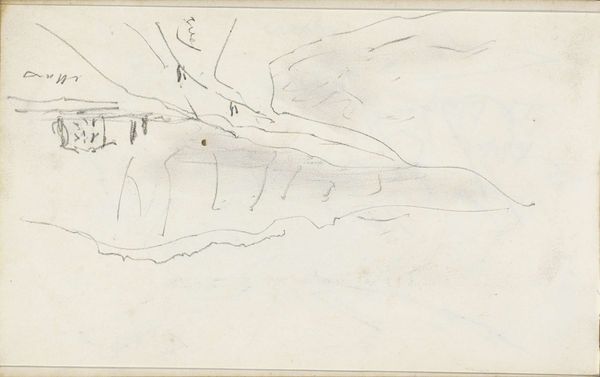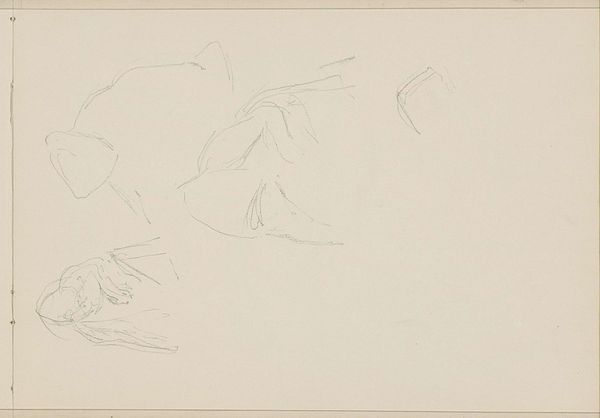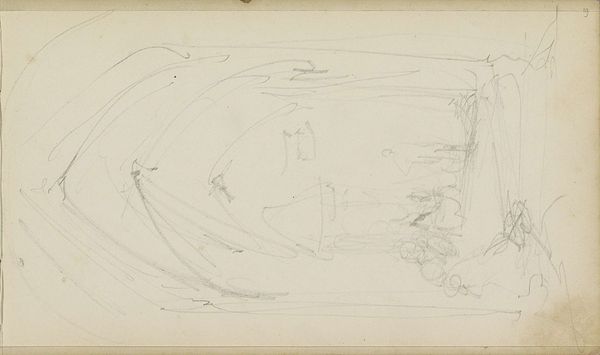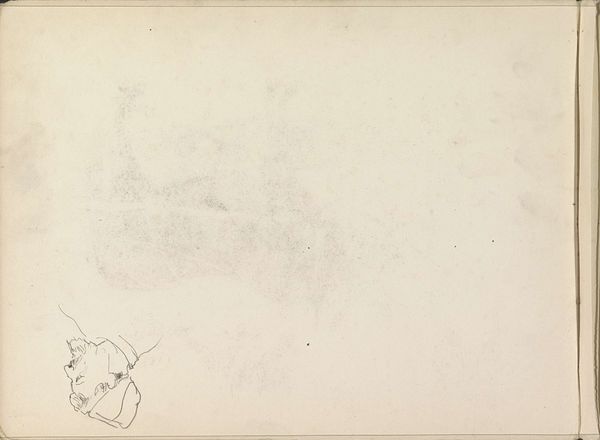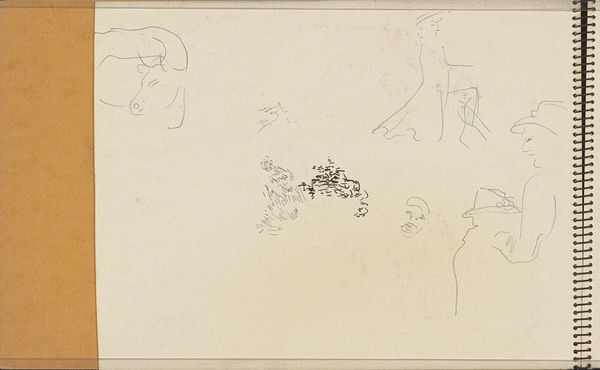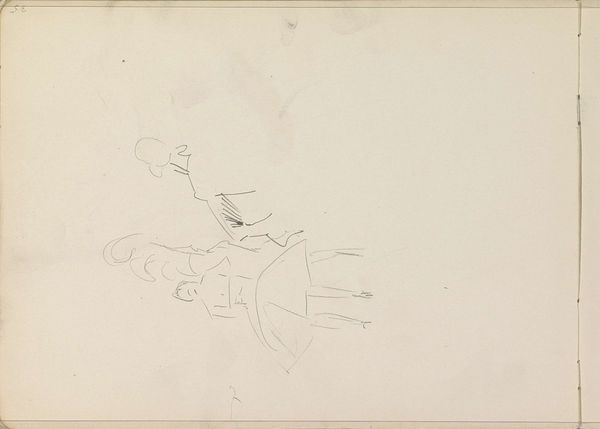
drawing, paper, pencil
#
portrait
#
drawing
#
amateur sketch
#
imaginative character sketch
#
light pencil work
#
pencil sketch
#
incomplete sketchy
#
paper
#
personal sketchbook
#
idea generation sketch
#
ink drawing experimentation
#
pencil
#
line
#
sketchbook drawing
#
sketchbook art
Copyright: Rijks Museum: Open Domain
Curator: Here we have "Studie, mogelijk van een kwabornament" – a study, possibly of auricular ornament – by Isaac Israels, dating from sometime between 1875 and 1934. Editor: My first thought? It looks like a peek into an artist's mind – incomplete, fragile, like a half-formed idea. There's this almost ghostly profile juxtaposed with a heavily shaded, baroque element. What material processes led to such a disparity? Curator: Well, the Rijksmuseum attributes this work to Israels. Given his connections to the Hague School, and later his depictions of Amsterdam street life, it begs the question: what public commissions, interior decorations or design manuals shaped his vision during this period, compelling him towards ornamentation? It appears to be a sketch, after all, but could have informed a larger work in any medium. Editor: Exactly! Israels’ labor here – the quick, light pencil strokes, the pressure creating dark areas, they betray a thought in progress, an artist working out some design. It brings to the fore questions of skill and process. I wonder, too, what role the very act of sketching played within the art market of the period? Was this merely a functional part of designing something larger? Was the paper re-used? These sorts of seemingly casual works offer so much when they appear outside their assumed context. Curator: Indeed, seeing this 'casualness' reminds us that artistic production wasn't solely about finalized artworks displayed in salons. What role did museums, exhibitions and schools of design play in shaping public taste for, or against, elaborate ornament during the artist's career? Israels inhabited a time of fluctuating cultural values and industrialisation, and art like this often mirrored those tensions. What kind of dialogue was this intended to create with potential consumers of ornamentation at the time, within private interiors, say? Editor: It leaves one contemplating the artistic economy of the late 19th and early 20th centuries, what survives, how, and to what end. These pieces speak volumes regarding intention, process, and societal attitude. Curator: It's remarkable to reflect on a piece not simply for what it is, but for the intricate historical threads and market conditions informing its creation. Thank you. Editor: My pleasure. It’s inspiring to glimpse behind the artistic facade.
Comments
No comments
Be the first to comment and join the conversation on the ultimate creative platform.
